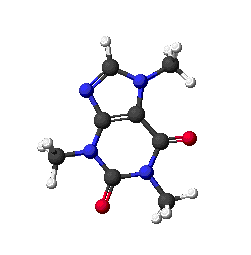
Chemistry
Chapter 6: 4-5

Homework
The Wave Nature of Light
Chapter 6: 4-5 Homework
- Reading Preparation
- WebLecture
- Study Activity
- Preparation work for chat
- Online Quiz
- Lab Instructions
Reading Preparation
Textbook assignment: Read Kotz and Triechel, Chemistry and Chemical Reactivity Chapter 6 Sections 4 to 5.
Study Notes
6.4 DeBroglie's equation, wavelength = h/p = h/mv, links the wave and particle properties of an object with mass m traveling at velocity v.
6.5 Heisenberg's uncertainty principle shows that we cannot know both the location and velocity of a an electron. Shrödinger's wave equation can tell us the probability that an electron with specific characteristics lies within a given volume of space, but it can't tell us where in the space the electron is. The characteristics are defined by the four quantum numbers, n (energy level), l (angular momentum), m (magnetic orientation), and s (spin).
Important Equations and Conversion Factors
| Principle | Formula | Notes |
|---|---|---|
| de Broglie Wave Equation |
λ: wavelength
m: mass v: velocity |
|
| Quantum numbers | n = 1, 2, 3, ....
l = 0, 1, 2 ... n - 1 ml = -l, ... -2, -1, 0, 1, 2, ... +l ms = ± ½ |
n: energy level
l: orbital angular momentum (orbital shape) ml: magnetic quantum number (orientation of orbital) ms: electron spin |
Web Lecture
Read the following weblecture before chat: Atomic Spectra
Study Activity
Videos for Chapter 6: The Structure of Atoms
Review the Videos at Thinkwell Video Lessons.
- Under "MODERN ATOMIC THEORY: Electromagnetic Radiation and the Idea of Quantum"
- The Heisenberg Uncertainty Principle
Simulation Activity
Use the simulation activity below to fire lightbeams of different energy levels at different molecules. Observe
- how light affects the orientation or motion of the entire molecule
- how light affects the bonds between atoms in the molecule
Chat Preparation Activities
- Essay question: The Moodle forum for the session will assign a specific study question for you to prepare for chat. You need to read this question and post your answer before chat starts for this session.
- Mastery Exercise: The Moodle Mastery exercise for the chapter will contain sections related to our chat topic. Try to complete these before the chat starts, so that you can ask questions.
Chapter Quiz
- There is no chapter quiz YET.
Lab Work
LAB #4 GUIDED INQUIRY: Measuring reaction rates for photosensitive reactions -- Phase II
Carry out the iodine-oxalate reaction and use your standard set of concentrations to estimate reaction concentration levels at regular intervals. Record concentrations and note when your reaction reaches equilibrium.
References:
- IGHCE Lab 17.1 Photochemical Reaction of Iodine and Oxalate
- HSCMK IX-1: Photochemical Reaction of Iodine and Oxalate]
- APGIE Investigation 2: How Can Color Be Used to Determine the Mass Percent of Copper in Brass?
- No Alternative Lab exists for this exercise.
© 2005 - 2025 This course is offered through Scholars Online, a non-profit organization supporting classical Christian education through online courses. Permission to copy course content (lessons and labs) for personal study is granted to students currently or formerly enrolled in the course through Scholars Online. Reproduction for any other purpose, without the express written consent of the author, is prohibited.